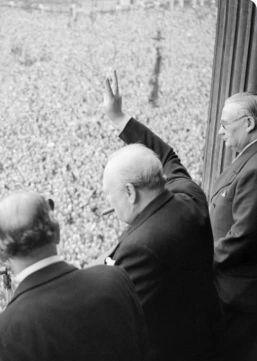Cultural appropriation, a term now heard often in media and academic discourse, is defined as “the inappropriate or unacknowledged adoption of an element or elements of one culture or identity by members of another culture or identity. This can be especially controversial when members of a dominant culture appropriate from minority cultures”. The advent of social media and digital diplomacy has led to a diplomatic practice that may be viewed as “historical appropriation”. Diplomats, foreign ministries and states now often appropriate historical events and leverage these events in order to narrate and justify state policies. This form of appropriation leads to multiple, and at times even contrasting depictions of the past. Although the past is often used as a template to explain the present, with terms such as ‘Cold War’ used to characterize China-US relations, historical appropriation is actually a contestation of the past. Events from the past are used to justify the present and not necessarily make sense of the present. For instance, the anniversary of a great battle can be stripped of its historical context and re-framed to justify war or invasions.
This past week offers a relevant case study as the world marked 78 to VE Day or the allied victory of Nazi Germany. The Polish Embassy to the EU utilized VE Day to substantiate a dominant Polish narrative- that Poland was the first victim of Nazi Germany, that Poland suffered the most at the hands of the Nazis and that Poland lost nearly 6 million citizens. This includes the 3 million Polish Jews who died in the Holocaust yet these are not counted separately by present day Poland. The Polish Embassy not only emphasized that Poland “suffered the greatest loss of citizens” but also stated that Polish war damages exceed 1 Trillion dollars, as can be seen below. In this instance, VE Day was appropriate to cement Poland’s self-depiction of its national history highlighting its victimhood and distancing itself from the atrocities of WW2 committed on Polish soil. The Polish Embassy used historical images of a destroyed Poland as proof of its historical interpretation. These images play an evidentiary role.
Russian official Dmitry Medvedev appropriated VE Day to justify the War in Ukraine, defame the EU and band and label the current leaders of Ukraine and the EU as the hires of the Third Reich. This was an important sophisticated form of appropriation as Medvedev first reminded followers that it was the Soviet Union that liberated Europe, that it was the Soviet Union that defeated fascism and that it was the Soviet Union’s flag which was hoisted into the Reichstag on VE Day. Next, Medvedev stated that Europe has forgotten the lessons of the past, an indirect accusation that the EU supports a fascist regime in Kiev. In this instance, history was appropriated to describe a moral obscenity. Finally, Medvedev suggested that the EU was guilty by association given its support of Neo-Nazis in Ukraine. Thus, history was finally appropriated to draw a moral contrast between Russia, that remembers the lessons of history and continues to oppose fascism and the rest of Europe that has embraced fascism.
The British Foreign Office tweeted an image of an ordinary men and women “who sacrificed everything for our freedoms”. Yet the tweet went on to state that the UK also thinks about its “Ukrainian friends” who are fighting tyranny today. Finally, the tweet said that the UK would do all it can to “restore peace in Europe”. The British historical appropriation is quite different from the Polish and Russian ones as it does not dwell on the price Britain paid to fight Nazism or to claim a moral authority. Rather the past is appropriated in order to make sense of a complex, contemporary crisis- the Russia Ukraine War. Just as the UK fought tyranny in WW2, so Ukraine is fighting a present day form of tyranny- Russia. Moreover, VE Day was appropriated to narrate the UK’s policy towards Ukraine, specifically the UK’s staunch support of Ukraine diplomatically and militarily.
The Ukrainian Ministry of Defense labeled “Ruscists” as “Today’s Nazis” which are destroying “peaceful cities” vowing that Russia’s empire will “fade” into obscurity much like the 1,000 year Reich. Here history may have been appropriated to glorify Ukraine’s war against Russia as this is no mere skirmish but another defining battle between good and bad, right and wrong and light and darkness, made evident in the nighttime footage of darkness and light that accompanied the tweet. This historical appropriation is in line with Ukraine’s broader online messaging which suggests that the current war is a war between Russia and all of Europe and a war between Russia and all democracies. Ukraine is thus at the forefront of a global struggle for freedom over evil and, as such, Europe and the democratic world must rally to its side.
A final interesting example can be found in a Tweet by the UK’s Ministry of Defense. Unlike the Foreign Office, the Ministry of Defense posted an iconic image- that of Winston Churchill greeting adoring crowds while giving the “V for Victory Sign”. By using an iconic image from British history, the Ministry of Defense was able to summon British history to the present. Iconic images are especially important in historical appropriation as they are images of seminal events that define a nation or a people; events that are summoned time and again to explain the present. The tweet stated that it was now more important “than ever to remember the sacrifices made to protect freedom and deter aggression”. The phrase “deter aggression”, coupled with Churchill’s image and the term “remember” may all combine to create a powerful message- that aggression cannot be appeased, that tyrants cannot be appeased and that the cost of protecting freedom is always high. Yet the image may also suggest that like the tyranny of WW2, the tyranny of Russia will also be vanquished, that soon another British Prime Minister or Ukrainian leader will hoist the “V for Victory” sign.
As this blog post has shown, history is like clay in the hands of diplomats and states. It can not only be summoned, but it can be re-shaped and re-interpreted to offer very different lessons. VE Day was used to depict the moral stature of Russia, the moral decay of Europe and the immoral attack on Poland. Yet at the same time it was used to justify the invasion of Ukraine, to condemn the invasion of Ukraine and illustrate two, contrasting visions for the end of the Russia-Ukraine War. For diplomats, historical appropriation is a powerful rhetorical tool as history is always present and it is through history that the present can be illuminated and explained.



 as a result of German aggression & occupation is estimated at $1 trillion 532 billion 170 million.
as a result of German aggression & occupation is estimated at $1 trillion 532 billion 170 million.  (@DefenceHQ)
(@DefenceHQ) 









